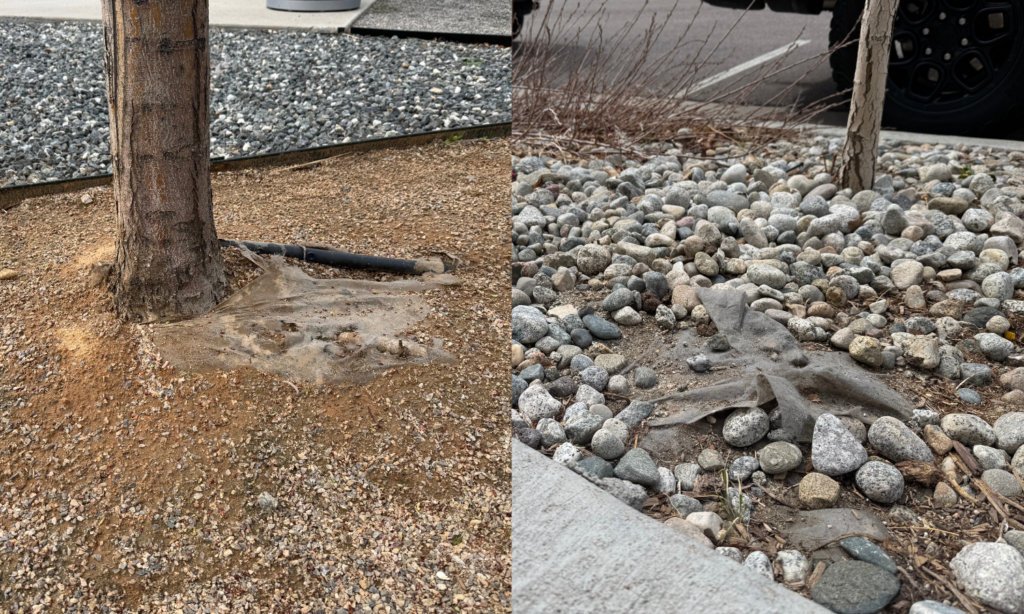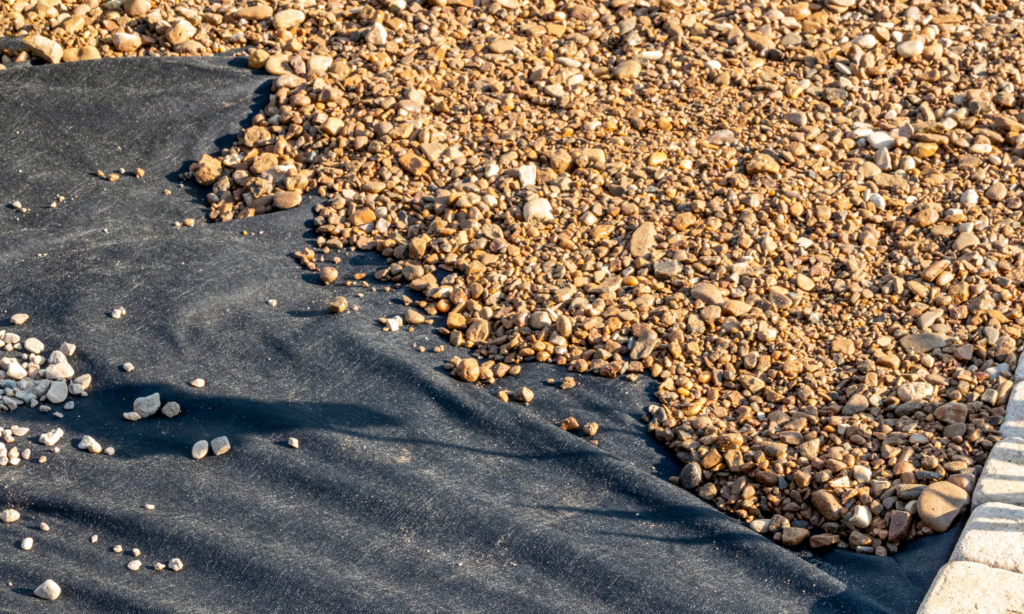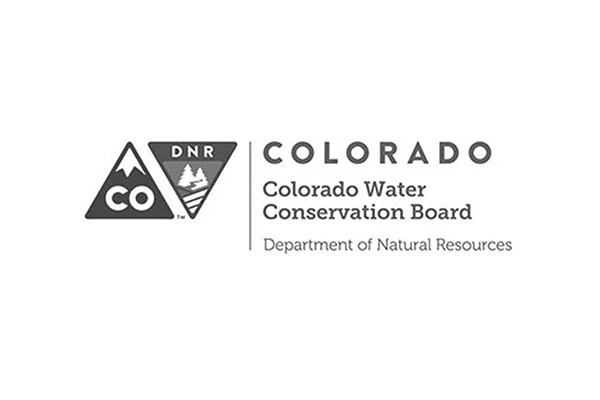We all know how frustrating it can be to keep weeds from taking over our beloved gardens. One of the most popular choices for controlling weeds is landscape fabric, but is it really the right solution for your garden? The short answer: we don’t recommend it.
At first glance, landscape fabric might seem like a miracle solution for weed control. It’s marketed as a barrier that keeps pesky weeds at bay while letting water and air reach your plant roots. Sounds great, right? While it can be a short term solution, the reality is that landscape fabric often doesn’t live up to its promises and can create more problems than it solves.

Weed Seeds Are Resilient
Weeds are tough and resourceful plants. They’re pioneers in the world of nature, capable of growing almost anywhere. While landscape fabric might temporarily block weed growth, it doesn’t stop the seeds from finding a way in. Over time, weeds will germinate on top of the fabric or even push through it. When this happens, it actually makes weeding a whole lot harder than if you hadn’t used the fabric at all.
Plant Growth Challenges
One major issue with landscape fabric is that the holes cut for plants are often too small to allow for proper growth. As plants mature, their stems can become girdled by the fabric, restricting their development and compromising overall plant health. Additionally, groundcover plants, which need space to spread, are forced to grow on top of the fabric without the ability to establish new roots within the soil, limiting their growth potential.
Fabric Interferes with Soil Health
If you’re using organic mulch, landscape fabric will prevent it from breaking down and adding those nutrients back into the soil. Even if you use woven landscape fabric, over time the fibers fill with sediment, which block water (and air) from reaching plant roots effectively. Instead of soaking into the soil where it’s needed, water may run off the fabric like a totally not fun slip n’ slide, leaving your plants high and dry. So much for the promise of retaining water and air flow!
The Trouble with Maintenance
One of the biggest issues with landscape fabric is that it’s a pain to remove once it’s been installed for a few years. Over time, the fabric breaks down, and it becomes tangled with plant roots, mulch, and dirt. If you want to add or move plants in your garden, you’ll quickly regret that you ever used the fabric in the first place. Plus, in windy areas, mulch can easily be blown off the fabric leaving unsightly bare fabric exposed.

When Landscape Fabric May Still Be Useful
That being said, landscape fabric isn’t entirely without merit. In certain situations, it can serve a purpose—though it’s far from a one-size-fits-all solution.
Hardscapes: In areas where you’re installing hardscaping without plants like pathways or patios, landscape fabric can be a helpful layer. However, it’s still important to remember that weeds are determined so this may also require weeding and maintenance after some time.
Reducing Herbicide Use: Some gardeners use landscape fabric to cut down on the need for toxic herbicides. If this is your primary concern, there are also other, more sustainable options to explore that don’t require fabric such as using cardboard, newspaper, planting closer together, planting more groundcovers, also known as “living mulch” and using effective mulches.
Conclusion: Skip the Fabric, Go Natural
In the end, our recommendation is clear: skip the landscape fabric (aka weed fabric) altogether. While it may seem like a quick fix, it often creates more headaches than it’s worth. The weeds will eventually grow on top of or through the fabric, and you’ll find yourself dealing with starved soils, water runoff, and a mess of tangled fabric when it’s time for maintenance.
Instead, consider using organic mulches or other natural methods to control weeds and nurture your garden’s soil. Your plants, your soil, and the environment will thank you for it. If you do choose to use landscape fabric, be sure to cut a generous size hole for plants to accommodate for future growth.
Learn more about using landscape fabric from CSU Extension and on the WaterwiseYards.org resources page!











